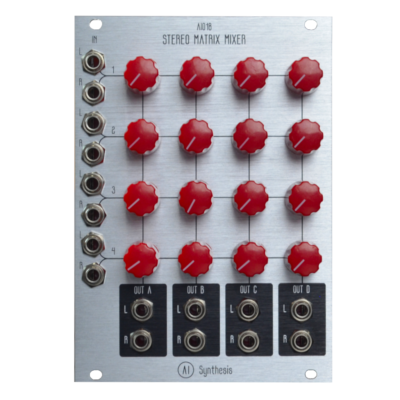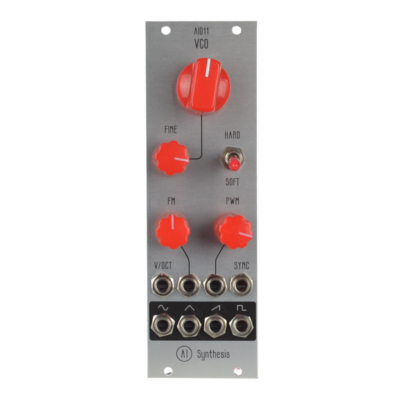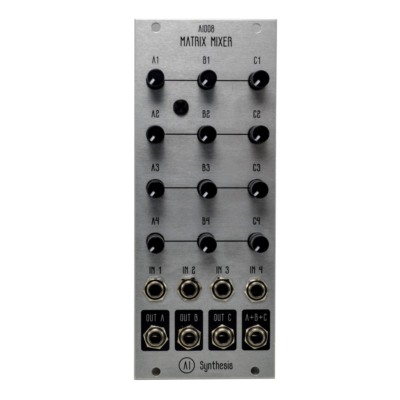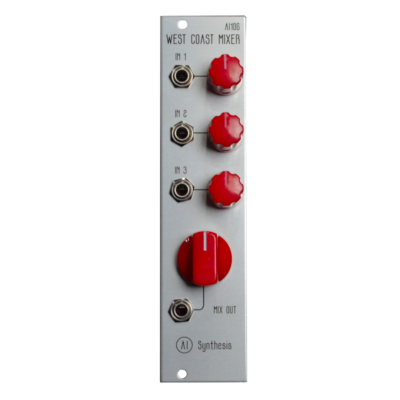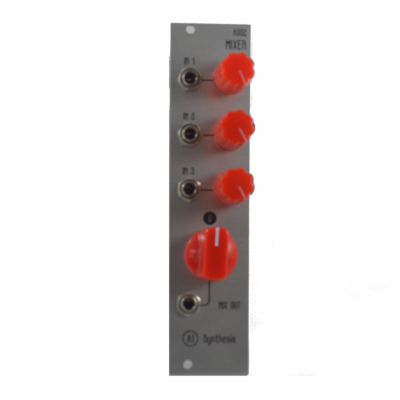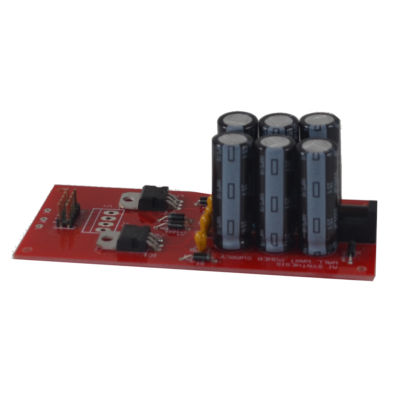Using Guitar Pedals with Your Eurorack Modular System
I am a huge fan of guitar pedals. Once I realized I could build my own gear, I built a ton of effects. While I use the effects with guitar, I also use them with my Eurorack, MOTM, and non-modular synthesizers.
In the late 90s and early 2000s I was a big fan of Trans Am and saw them live quite a few times. After the first time, I experimented with running my Juno 60 through an amp like they did, but I was disappointed by the results. Then I saw them in the front row of a show, and saw that prior to the pedals and the amp, Trans Am’s Juno was running through a re-amp box, so I started doing research.
Synthesizers (modular and otherwise) produce an output that is 20dB louder than that of a guitar. Giving too much gain to a pedal can cause noise, distortion, and a decreased responsiveness to the pedal’s controls. removing 20dB of gain from a synthesizer signal is fairly easy, but If you plan on feeding the effected synth signal to anything other than a guitar amp, you’ll also need a way to re-amplify the signal and add back the 20db of gain after it’s gone through the pedals.
Using Guitar Pedals with Your Eurorack Modular System
There are four popular methods of decreasing and increasing the gain to get it to match the pedals, we’ll go through the pros and cons of each. In each case I’m going to assume you are tying to record the audio with a line level interface:
- Turn down the synth. Pros: can be cheap or free if the synthesizer has a volume output, and little or no extra gear is needed. Cons: You will need another method of adding 20dB back to the signal post-pedals, and depending on that method, it might be tricky to find the sweet spot between an attenuator and a pre-amp or other method.
- Using a mixer with stomp-boxes on the effect send. Pros: Using the send control is a great way to control volume going out to stomp-boxes. If you are already using a mixer, then this is a nice added feature. Cons: Sending multiple signals to the same path will require re-balancing each signal to ensure that the mixer is not overloading the send (depends on the mixer). Depending on your mixer, the Return control may or may not add gain to the chain (especially the 20dB needed) to amplify the signal.
- Using a re-Amp Box and a DI. Pros: This is “the right” way to do it, and the way a professional recording studio would very likely do the task. This is called “re-amping” and, in addition to being used to send synthesizer signals through stomp boxes, would also be used to send recorded guitars, basses, and other signals to pedals for coloring. Cons: it can be pricey, as “real” Re-amp boxes and DIs will use transformers.
- Use a dedicated Stomp-box adapter. Pros: Companies like Doepfer, Bastle, Strymon, and me have designed dedicated Eurorack Stomp Box Adapter modules that provide exactly the gain reduction and amplification needed to provide guess-free processing. Cons: These take power and HP in your eurorack system, and can cost as much as a good DI.
Not all Pedals need matched Impedance
Adding confusion to the question of matching impedance are varying pedal designs. In designing the AI006 Eurorack Stomp Box Adapter, I A/B’d all of my pedals individually and in groups to test it. While all of my analog pedals, and especially the fuzz and distortion pedals saw a night and day difference when using the stomp box adapter in volume, clarity, and detail, some of my digital pedals, like my Line 6 Verbzilla, showed no difference at all in tone or volume regardless of whether or not the stomp box adapter was in use. Here are some A/B demos I recorded:
